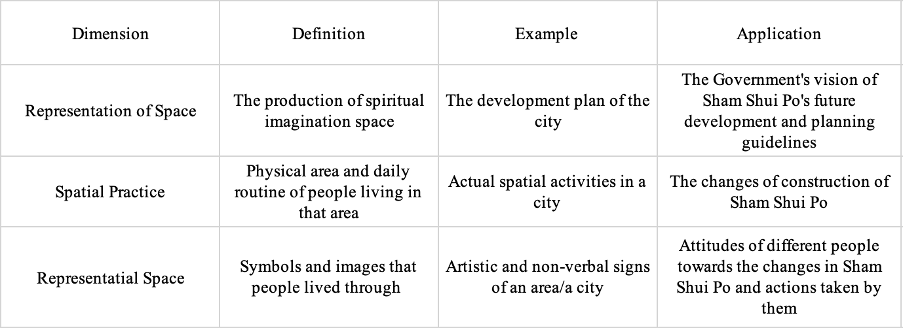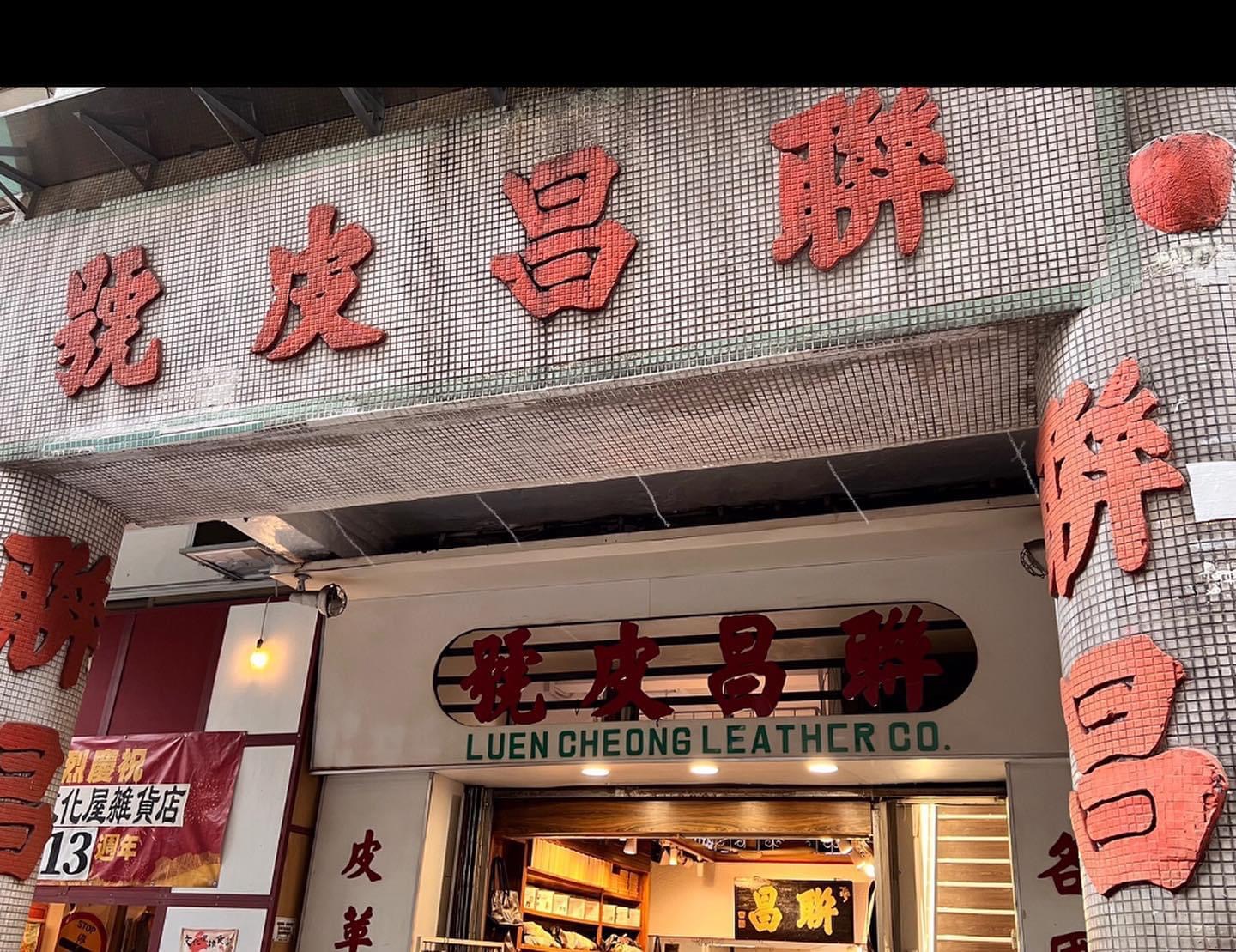
Figure 1: photo of Tai Nan Street in Sham Shui Po (Photo by HL Tam)
1. Introduction
Sham Shui Po is one of the eighteen districts in Hong Kong, located in the northwest of the Kowloon Peninsula. Previously, Sham Shui Po always seemed to be synonymous with "poor" and "chaotic"(Figure 1). The main reason is that the poor environment makes the living cost there much lower, attracting more poor people to the site. In recent years, there have been some changes there - an increasing number of studios and art shops have opened, so it has become a popular destination for youths. This transformation has been particularly noticeable in Tai Nam Street, as the emergence of the art stores has dramatically changed the ecology of this community. This project focuses on whether “Gentrification” appears in Tai Nam Street, the target of most commercial activity, and its occurring process, and how the old and new spaces intermingle through Henri Lefebvre’s theory of spatial triad.
2. Theoretical Approach: Lefebvre’s Spatial Triad
The Spatial Triad is a model created by Henri Lefebvre, providing a framework to recognize the three elements of producing space, which are “representation of space”, “representational space”, and “special practice”. Representation of space is known as "conceived space", that is, space conceptualized in the intellectual community; representational space is that in the process of practice, spatial concepts/planning/regulations from knowledge/experience are used to guide the reproduction of space; spatial practice is referred as “perceived place”, which is the space that exists that can be perceived and measured. (陆舟,2018). The core of this theory of space is the spatialization of production and productive behavior. Human beings, serving as stakeholders, have moved from the "production of things in space" to the "production of space itself".
There are many stakeholders in Sham Shui Po, including the HKSAR Government, residents, new merchants, and tourists. All of them exert their own influence on Sham Shui Po, and their interactions have created some culture collisions and infusions. In our project, to conclude how current Tai Nam Street was produced, we must analyze all the stakeholders’ traces on this space respectively. We try to understand the effects from 1) the government’s plan for Sham Shui Po’s development, 2) people’s daily use of space, and 3) the way people eliminate conflicts when cultures collide. The table below (Figure 2) helps explain the meanings of the three elements of spatial triad and their applications in the situation of Sham Shui Po.

Figure 2: An illustration of Lefebvre’s Spatial Triad
3. Sham Shui Po as an Infusion of Old and New Cultures
What is the government’s role in shaping the change in Sham Shui Po, especially Tai Nan Street?
In the process of redeveloping Sham Shui Po, the government tried to follow the principle of “people-oriented”, being sustainable that preserving the existing advantages of life of the residents, not following the bull-dozing development which demolishes all the old areas(深水埗民間規劃,2008). In 2018, the Commerce and Economic Bureau has formulated a plan to establish a design and fashion base in Sham Shui Po, taking advantage of the district's garment and fabric wholesale and retail hotspots there to create new synergies(香港特別行政區政府新聞公報,2018). The replanning and reorganization of land use by the Urban Renewal Authority function to ameliorate the living environment of those residents, starting from infrastructure construction. The government hopes to stimulate development through such improvements(市區重建局,2021). From May to October 2021, Tai Nan Street was renovated under the supervision of the government. The purpose of this renovation was to enhance the overall image of Tai Nan Street in order to improve its commercial and residential value and cohesive business atmosphere. These moves by the government are undoubtedly an attempt and a guideline to have a good integration of the old and the new. The thoughts seeping through these actions taken by the government served as a guideline or template for subsequently developing Sham Shui Po into such a “conceived place”.
What do Sham Shui Po Residents do in Tai Nan Street?
Tai Nan Street has been known for its factories of producing fabrics, leather and accessories since the 20th century. Gentrification, a transformation of a poor urban area by wealthier people moving in, has become a social phenomenon in Tai Nan Street in recent years which has turned from industrial-orientated into art-based development. Due to the geographical advantage, it attracts different industries to operate their business in Tai Nan Street, such as hostels, cafes, workshops and even exhibitions. They utilize the historical background of the street to raise public awareness on what they are doing. For instance, a former young interior designer (the owner of WONTONMEEN) rented a flat in Tong lau to hold an exhibition about people’s living in Hong Kong in the 2000s and also as a hostel which can preserve Hong Kong culture in a fresh way.
The spatial practice of the new members in Sham Shui Po (the younger generation) are in contradiction with the aged local residents. Long-term residents who lived in Sham Shui Po for many years tend to earn a living by running traditional industries such as textiles and leather industries, go to local small restaurants which sell food at an affordable/ cheaper price and maintain good social ties with the neighborhood. Owing to the moving in of the new shops and young people, the younger generation tends to sell their products at a relatively higher price and operate new types of shops such as coffee shops and hostels which are completely different from the local residents.
How do people cope with the changes in Tai Nan Street?
In response to the government’s active participation in renovating and revitalising Sham Shui Po by urban renewal projects and various art activities, the Sham Shui Po residents organized protests and petition against urban renewal project and the Sham Shui Po Art Centre to express their opposition as they were worried about the increase in shop rent that is unaffordable for them and the phenomenon of gentrification. In addition, Sham Shui Po residents were afraid that the precious and unique local traditional culture in Sham Shui Po might disappear with the emergence of new shops such as coffee shops and studios selling $50 coffee and over $200 plates (Coredassp, 2021). Given the inevitable emergence of new shops, Sham Shui Po residents had no choice but to adapt to the new incoming culture. They attempted to share their experiences and skills with the younger generation and hoped to pass their skills on to the next generation.
On the other hand, It is against the younger generation’s wills when Tai Nan Street is gentrified because of their participation and it is also difficult for them to survive if the process of gentrification keeps happening. As the changes in Tai Nan Street were begun by the younger generation, they had inescapable responsibilities to preserve the traditional culture in Sham Shui Po by including representative local decorations in their design of shop, organizing workshops which invite Sham Shui Po residents and shop owners to teach citizens their techniques such as making galvanized iron products (廖清怡,2017). They treasured the old culture and the traditional industries in Sham Shui Po, emphasizing cultural inheritance. They tried to bring in new cultures and energies to Sham Shui Po while conserving the old ones, blending the old and new.

Figure 3: An illustration of Lefebvre’s spatial triad and the conflicts between local residents and the young generation in Sham Shui Po
What are the results of the interactions between the old and new cultures?
New traces can be found in Sham Shui Po and Tai Nan Street demonstrating cultural infusion. First, the buildings and the gates of the old shops in Sham Shui Po are decorated with paintings and graffiti by local and overseas artists in 2016 (Hkwalls, 2022). It showed the combination of old buildings, old town and art and changed the old and decayed image of Sham Shui Po by adding colours and energy.
Second, an old shop selling leathers and leather products in Tai Nan Street named “Luen Cheong Leather” was renovated due to the incoming culture (Figure 4). The shop owner received inspiration from other new coffee shops and leather shops and therefore changed the interior design of their old shop while keeping the iconic and historical billboards and facade. It was converted from a leather shop to a multipurpose store which offers leather workshops and displays. The new culture brings in new ideas to the traditional industry in Sham Shui Po.

Figure 4: A photo of renovated Luen Cheong Leather (Photo retrieved from Facebook page 聯昌皮號 Luen Cheong Leather HK, Since 1948)
4. Conclusion
This study attempts to employ Lefebvre’s Spatial Triad to explain the interaction and changes in Sham Shui Po, especially in Tai Nan Street. Although the government tried to renovate Sham Shui Po by enhancing the commercial value through urban renewal project and art programs, the Sham Shui Po residents and the young generation could preserve the old cultures and combine the old and new cultures to counter the representations of space and the authority through cooperation such as skill transfer and experience sharing to slow down or halt the process of gentrification and replacement of culture.
References
Coredassp(2021年6月24日)。〈〈第三場:草根街坊有乜講?〉深水埗街坊對談錄—與其追究誰之責 不如尋條共生路?〉。社區互助發展行動。取自https://coredassp.wordpress.com/2021/06/24/%E3%80%88第三場:草根街坊有乜講?〉深水埗街坊對談錄/
Hkwalls (2022). 2016 HKwalls Festival in Sham Shui Po. Retrieved from https://hkwalls.org/festivals/hkwalls-2016-sham-shui-po/
Lefebvre, H. (1991). The production of space. B. Blackwell.
[留低方案]-深水埗民間規劃. (2022). Retrieved 17 October 2022, from https://sspstayplan.wordpress.com/2008/03/28/
市區重建局(2021年9月24日)。〈市建局啟動深水埗區兩個重建項目 善用土地資源 提升市區更新效益〉。市區重建局。取自https://www.ura.org.hk/tc/news-centre/press-releases/20210924
何潔泓(2017年3月19日)。〈文青空降泡製街坊咖啡 扭盡六壬與居民融合〉。《香港01 》。取自https://www.hk01.com/article/77826?utm_source=01articlecopy&utm_medium=referral
香港特别行政區政府(2015年10月) 。〈2014香港貧窮情况報告〉。香港特别行政區政府。取自https://www.povertyrelief.gov.hk/pdf/poverty_report_2014_c.pdf
香港特别行政区政府新闻公报 (2018年1月9日) 。〈政府计划建立深水埗设计及时装基地(附图)〉。取自 https://www.info.gov.hk/gia/general/201801/09/P2018010900445.htm
廖清怡(2017年9月4日)。〈大南学堂:迎来新的社区营造浪潮?〉。《香港01 》。取自https://www.hk01.com/article/116857?utm_source=01articlecopy&utm_medium=referral


